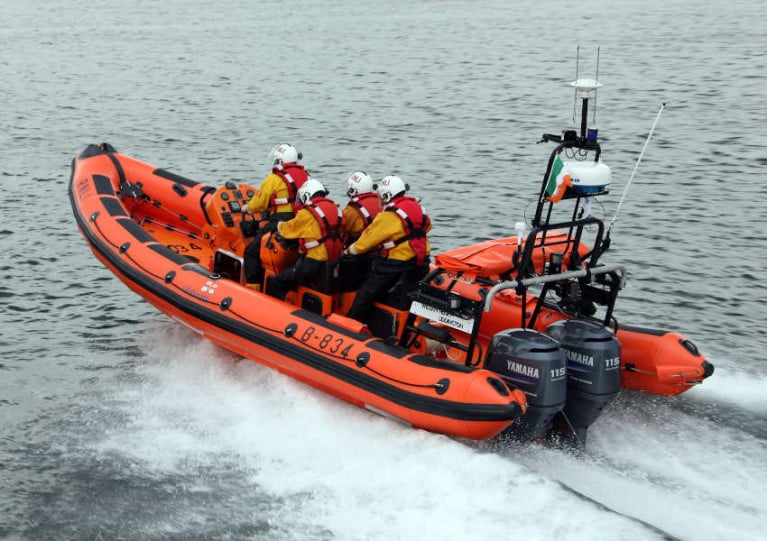Volunteers from Bundoran RNLI were part of a multi-agency operation to rescue a man whose small boat ran aground on rocks in Ballyshannon yesterday afternoon (Sunday 20 December).
The man raised the alarm from his boat which had run aground off the island of Inis Saimer just before 1pm, and Malin Head Coast Guard requested the launch of Bundoran’s lifeboat as well as the Sligo-based Irish Coast Guard helicopter Rescue 118.
However, it was determined that sea conditions would render it unsafe for the inshore lifeboat to get across the bar at the end of the Erne Estuary.
Instead, four lifeboat crew travelled by road to Ballyshannon where an Inland Fisheries Ireland patrol boat was already close to the casualty vessel.
Together the fisheries officers and lifeboat volunteers evacuated the man from his boat and brought him safely to shore and the into the care of paramedics.
In the meantime, the Bundoran lifeboat was transported by road under Garda escort to Ballyshannon, where it was launched and towed the casualty boat away from the rocks.
Bundoran lifeboat helm Michael Patton said: “This was another good outcome with the cooperation of our colleagues at Rescue 118, Inland Fisheries [Ireland], the National Ambulance Service and the Garda Siochana.
“We were glad to be able to get the man safely off the boat and return his boat to him.
“He was also wearing a lifejacket, and we would remind anyone taking to the water that this is an essential piece of equipment anytime you set sail.”































































